News
We already grow a number of herbs, flowers and soft fruits for our bar. This spring, however, we embarked on a new and exciting planting project, with the aim of growing on a greater scale. In doing so, we hope to have access to a number of rare and more interesting flavoured varieties which are simply not commercially available. Not to mention herbicide free!Here are some recent photos of what we've been up to lately...
Wildflower Planting
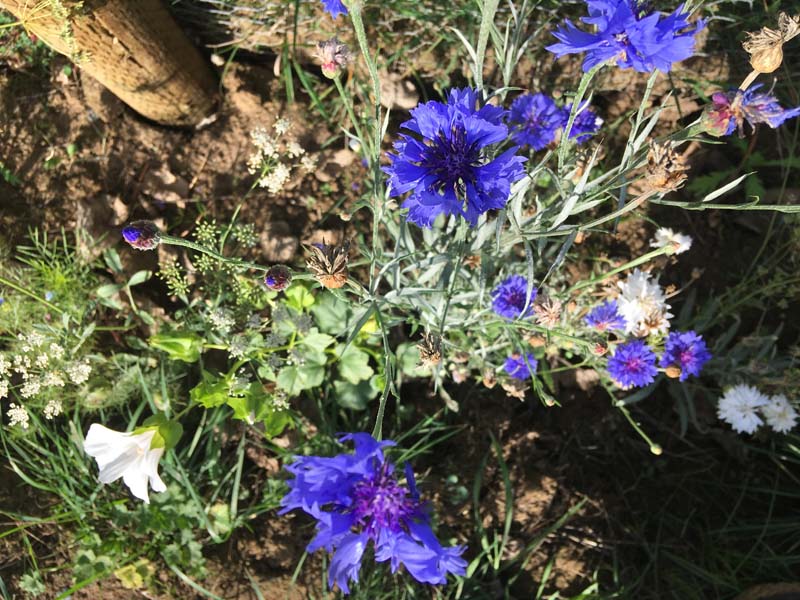
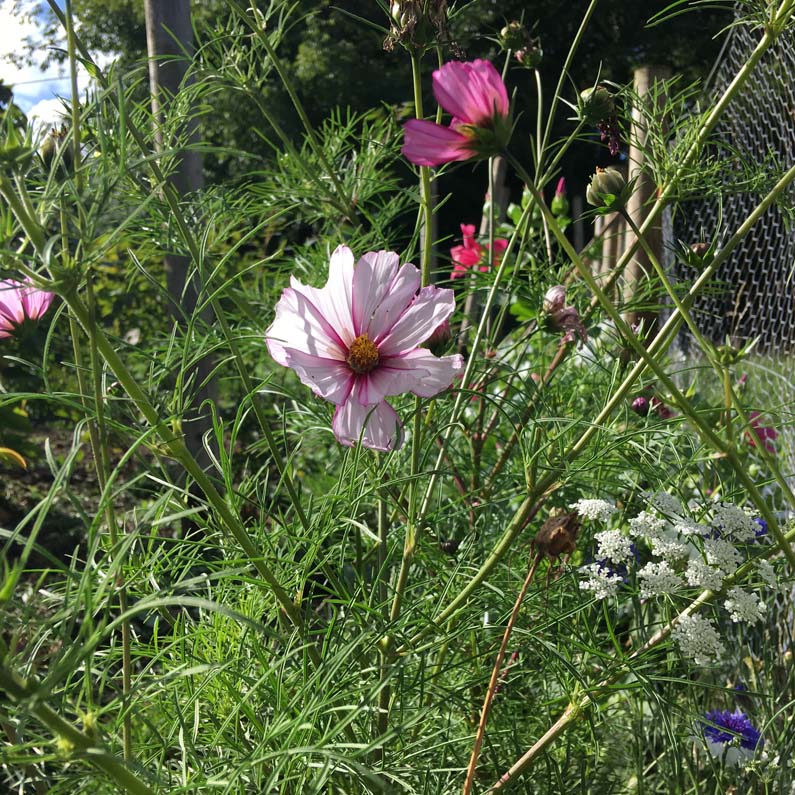
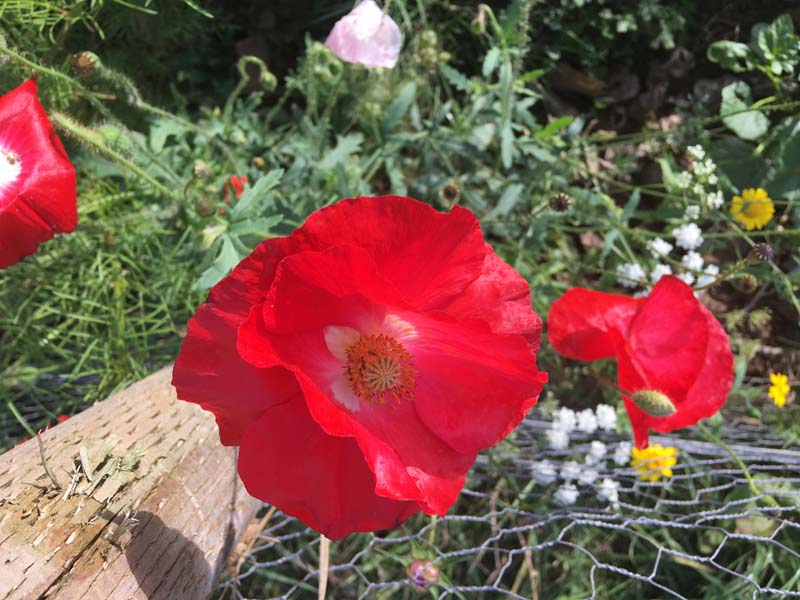
Rose Planting
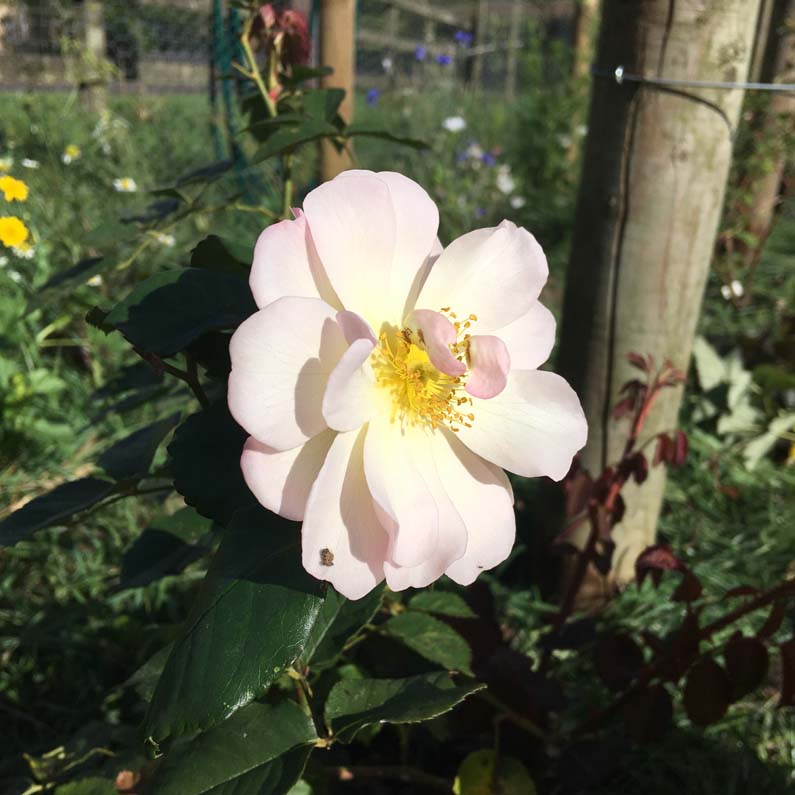
Soft Fruit Plantation Established
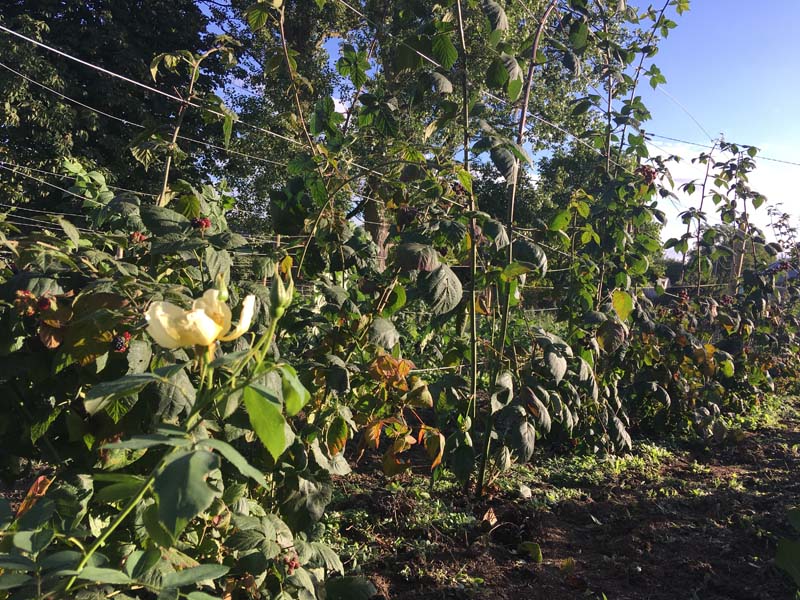
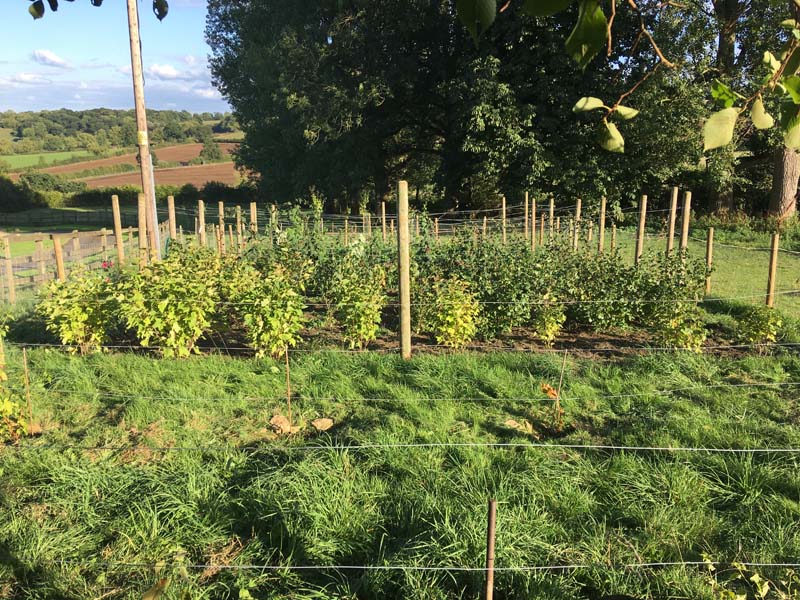
Winter
November 2017
Time to begin Winter pruning tasks. The saw must come out and diseased, broken or unproductive wood must be taken out. Ideally the pruning of older, more fragile trees would wait until the sap starts to rise again (thus reducing the opportunity for disease to enter dormant wood), but failure to remove damaged or over-stretched branches until Spring may result in further trauma from wind damage and infections.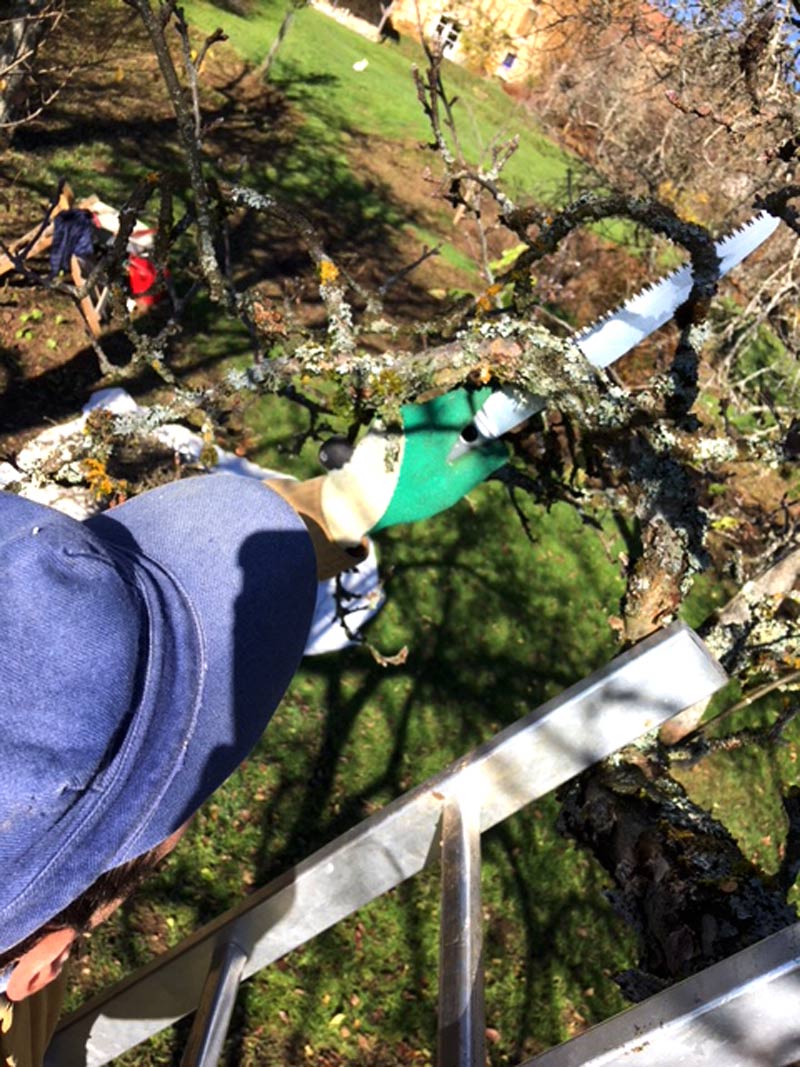
Before pruning
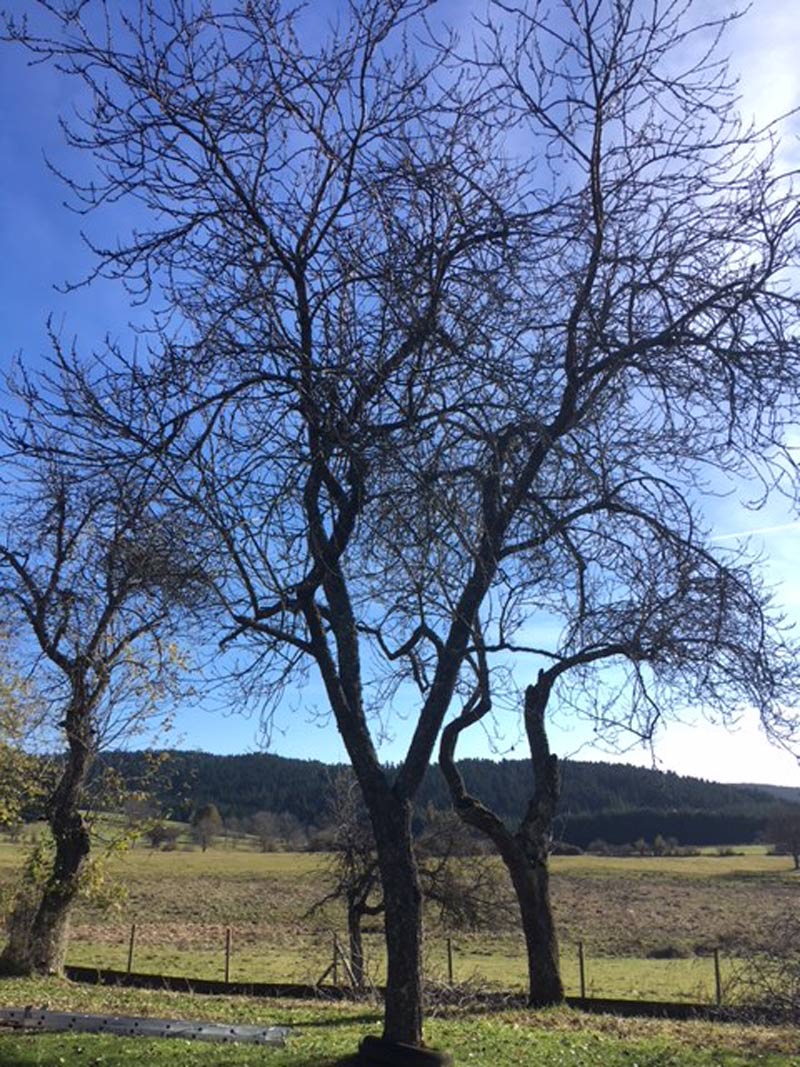
After pruning
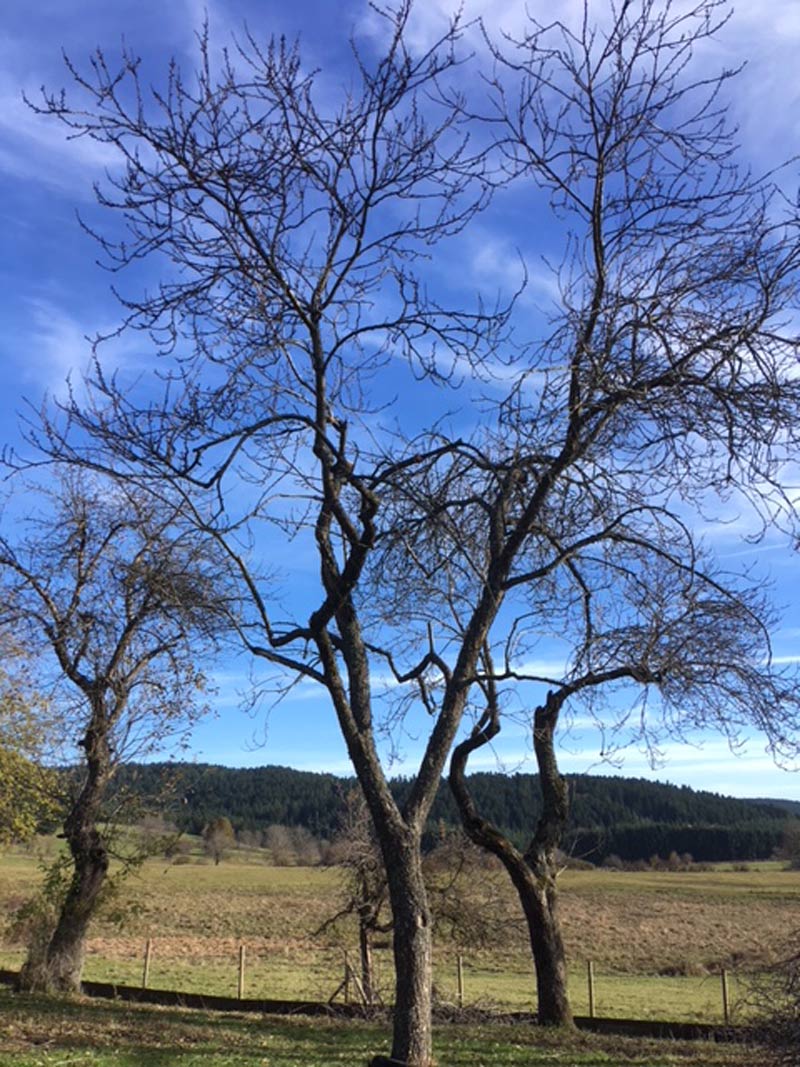
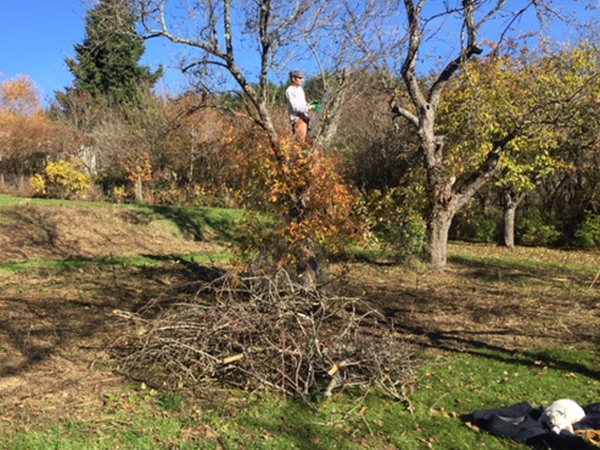
Autumn
October 2017
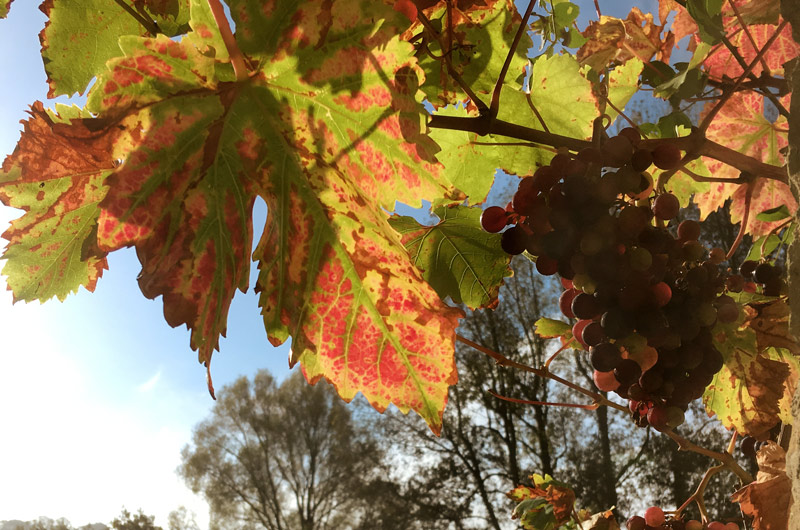
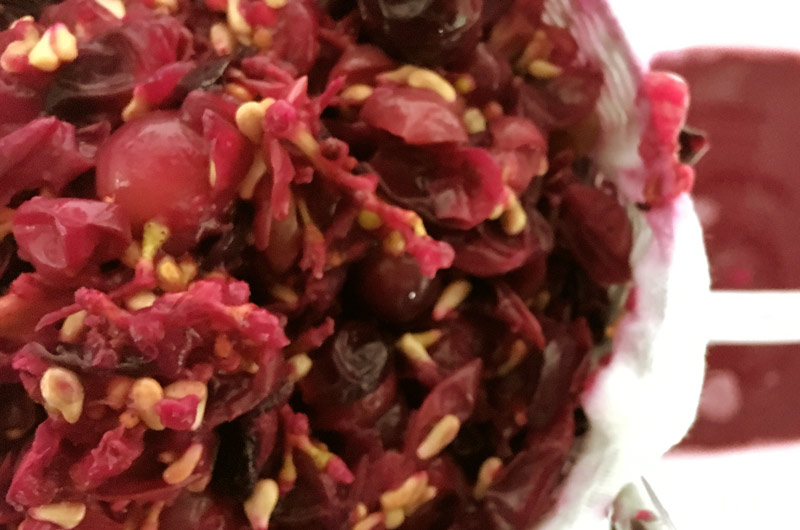
This year we decided to pick some grapes from an already established vine with the idea of making a Vermouth from scratch. The grapes were allowed to ripen as far as possible given the wet weather seen by Somerset this year. The juice is very tart, and being low in sugar resulted in a very thin juice and so less suitable for winemaking (although this is another dream!). Perfect for Vermouth though - a process which involves the addition of caramelised sugar to the finshed wine, along with everything else.
We have six other young vines planted in the top plantation, which will hopefully contribute more to this project over the coming years. Mildew permitting of course.
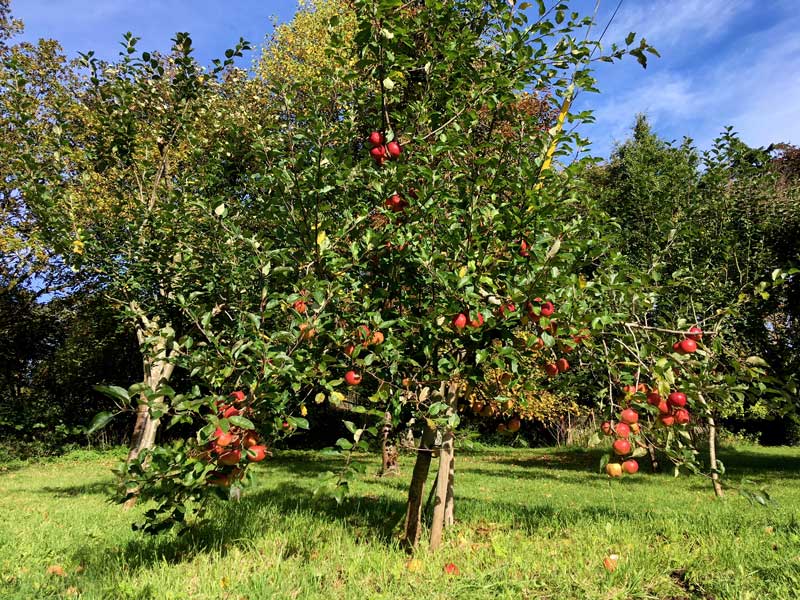
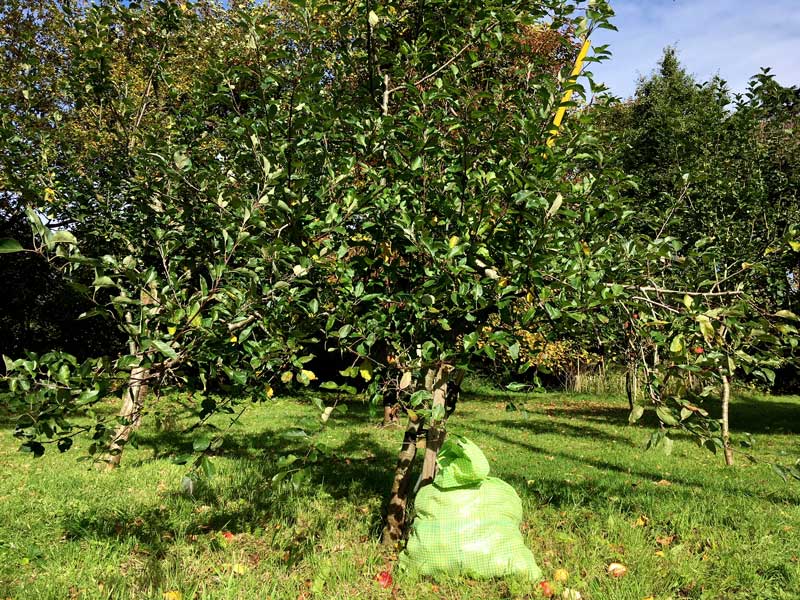
Fruit picking is underway on a number of the mature trees in the top orchard. This before and after photograph demonstrates the potential yield a well pruned tree is capable of producing. Despite it's small size, and the fruit having already been thinned-out in August, the half-full sack weighs approx 18kg. The fruit is of excellent quality.
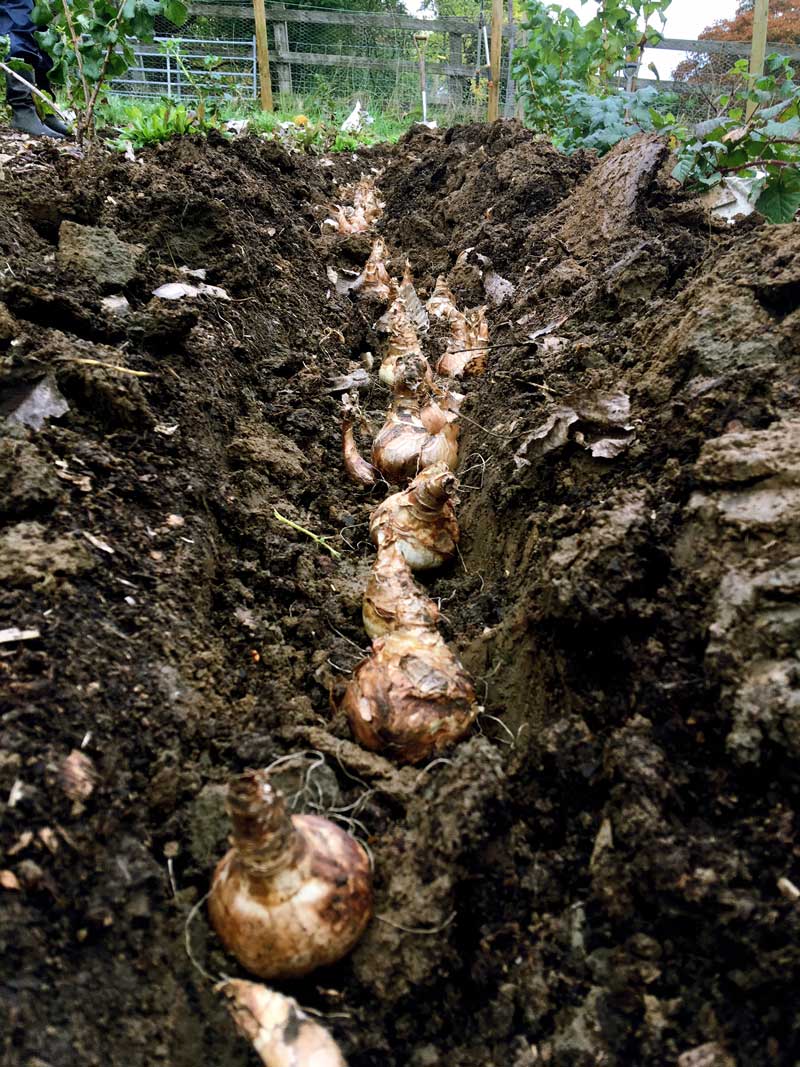
Between winter and spring there is little in the way of decoration or foliage as far as soft fruit goes. In order to add a little colour, a catch-crop of around 300 bulbs including the Narcissus 'British Gamble' will make their appearcnce (hopefully) in April.
Late summer
August 2017
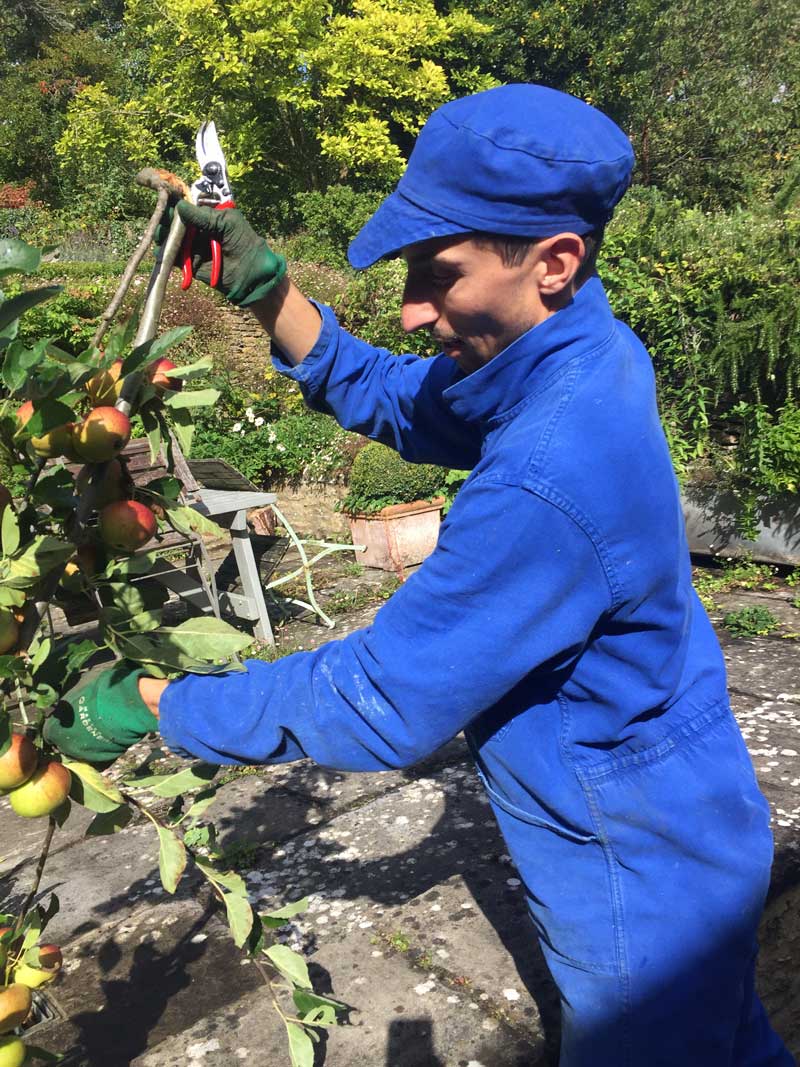
Fruit production on some trees has been prolific - resulting in a few broken branches. Our groundsman Luigi [pictured].
A Walk in the orchard
June 2017
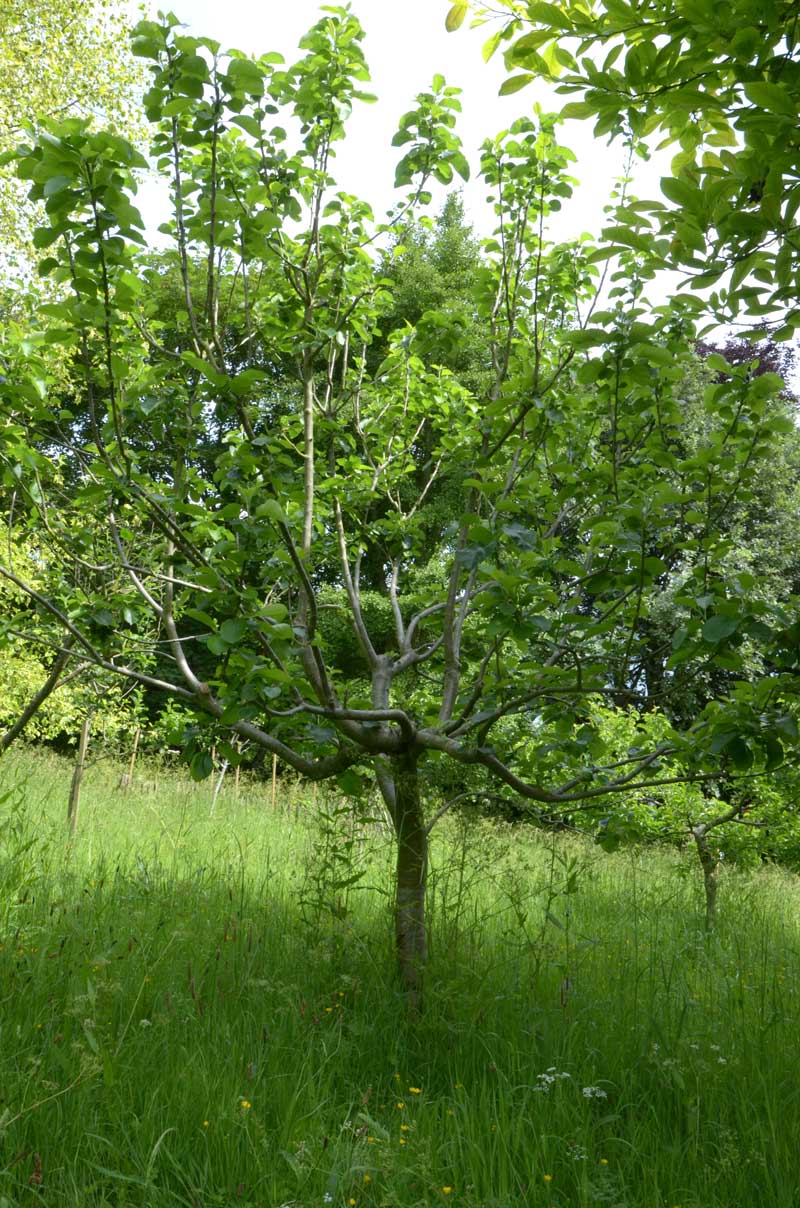
We spent a good deal of time performing renovative pruning work on several older apple trees in the orchard above the plantation. Many trees had become overcrowded with too much vegetative or unproductive growth, and this was removed in order to distribute light and air more evenly throughout each tree. The above image demonstrates the ideal 'open centre' shape. Very satisfying to prune!
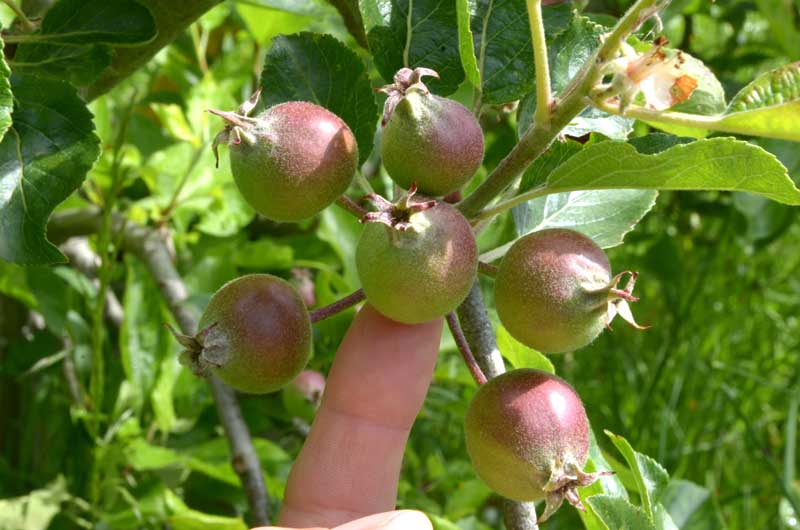
Despite heavy pruning, there is till a good crop of fruit forming, and this will be of far better quality. In fact, pruning has encouraged several trees which hitherto have produced nothing to bear some early signs of fruit. In this image we see the formation of apples on a branch in the classic constellation. As these fruits grow they will crowd each other and consequently some must be removed. This will ensure the tree puts all it's energy into fully ripening whatever fruit is not removed. The most important fruit to reove is the 'king fruit' [the one centred inthe star].
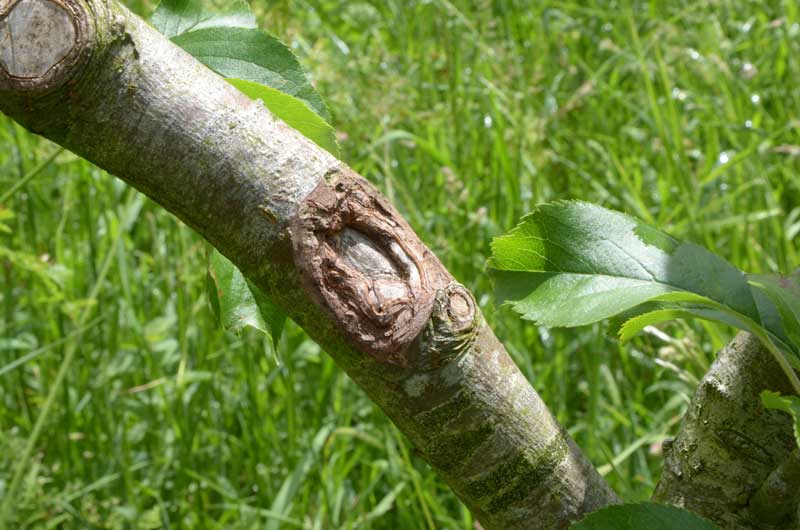
A common 'wound' to behold on many a fruit tree; either caused by damage, rubbing from another branch, or some internal affliction. If left untreated or allowed to remain in it's current state,it will result in the spread of malignant forces throughout the tree. In this case, the wound was superficial, and the branch a particularly productive one. Damp, rotting bark was cut away with a sharp knife until the bright green, 'living wood' was reached. This newer bark will then hopefully heal more cleanly than before, and close-up around the wound. If the branch does not heal satisfactorily then it must be cut out completely and burned.
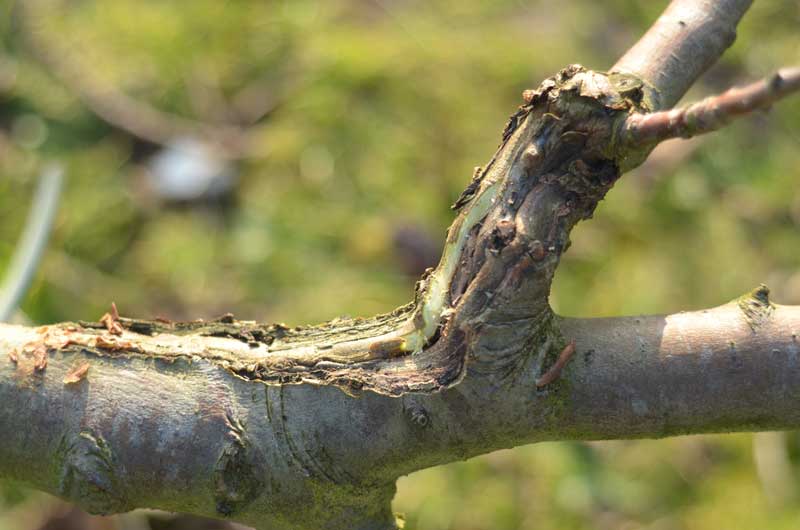
New growth is established
May 2017
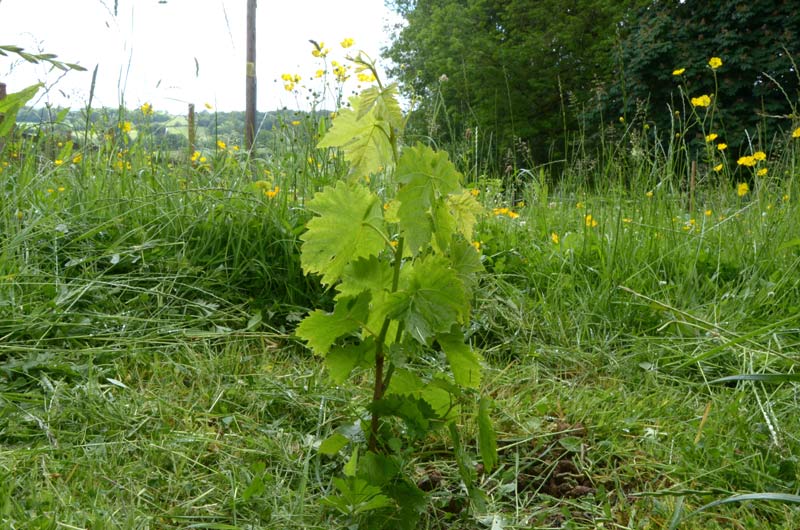

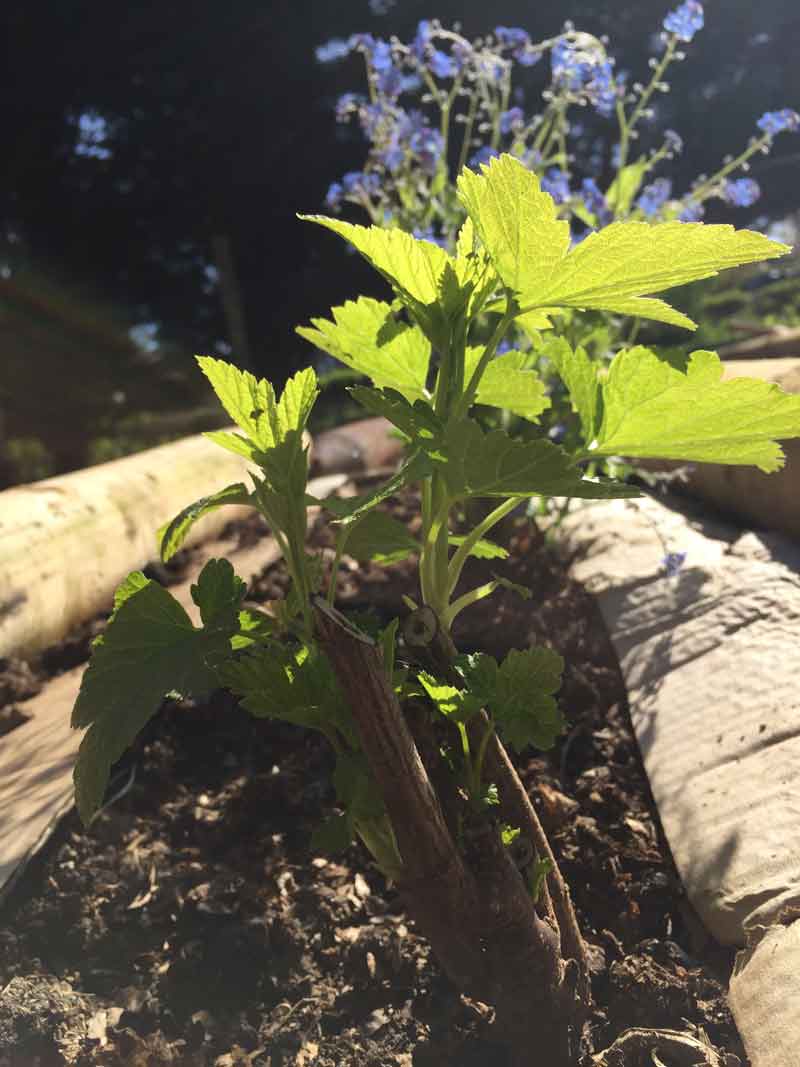
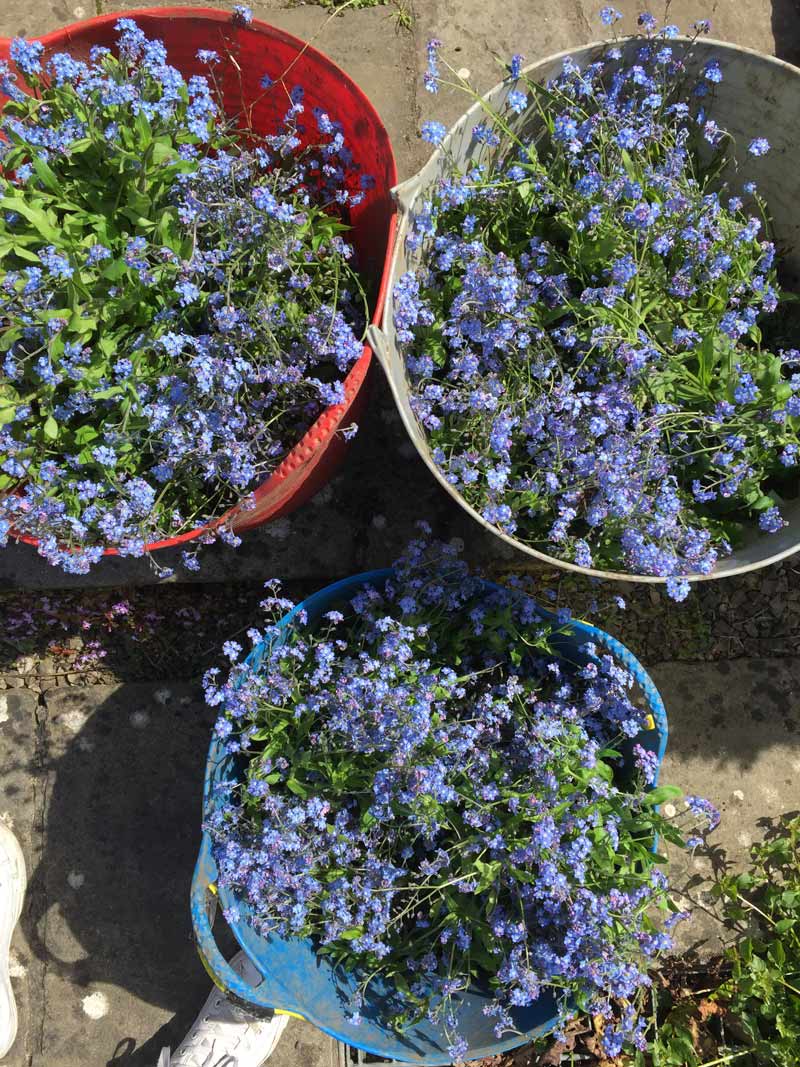
Pruning newly planted rootstock
March 2017
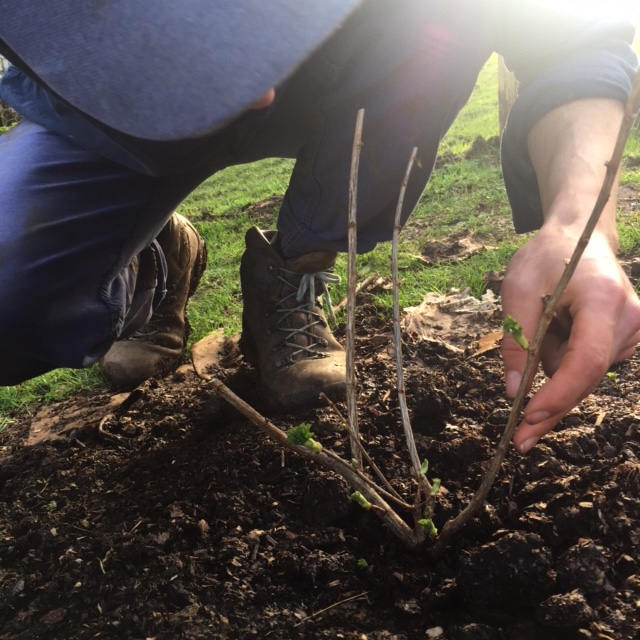
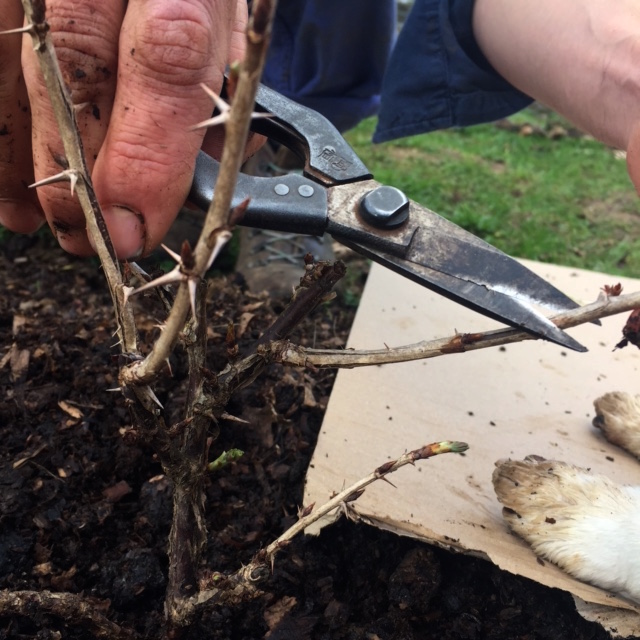
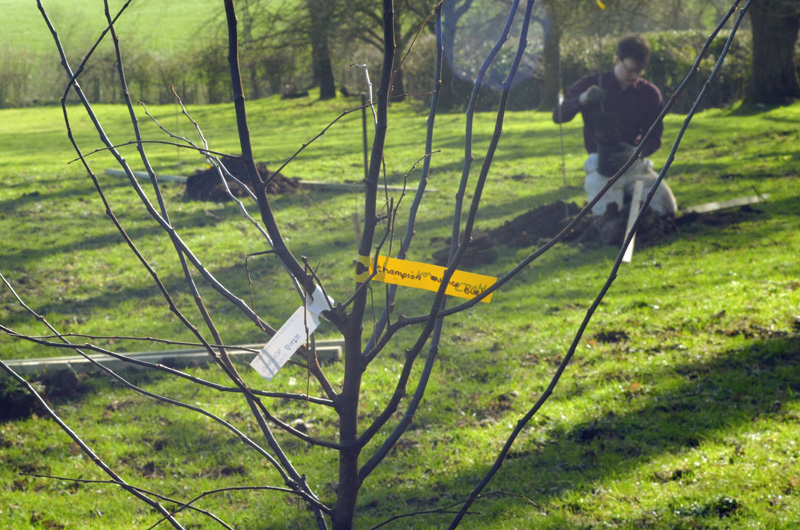
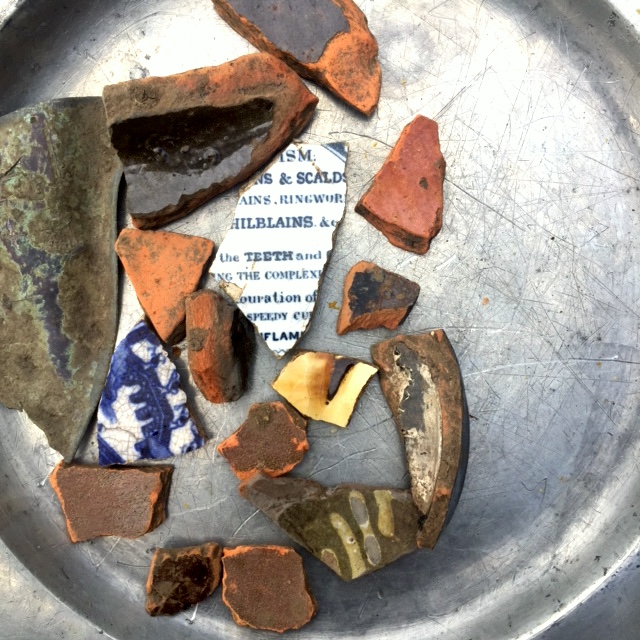
When digging in new trees Charles hit a horizontal plane of rock and pavestones, along with the following ceramic artefacts, which are currently being analysed at the British Museum.
Our planting project begins
February 2017
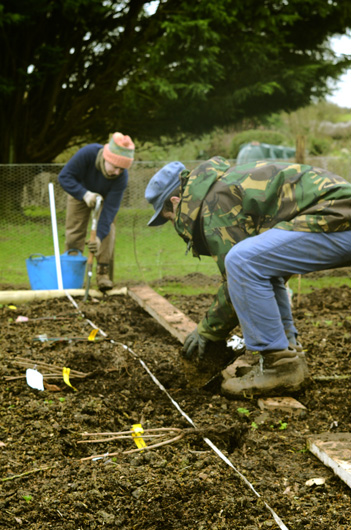
In february we began putting our rootstock in the ground. We planted a total of 80 fruit bushes, ranging from gooseberries, tayberries, jostaberries and currants to five different varieties of raspberry, and even eight grape vines (Somerset vermouth anyone?). On top of this we put eighteen trees in the field beyond, namely plums, gages, cherries, cider apples and a walnut.
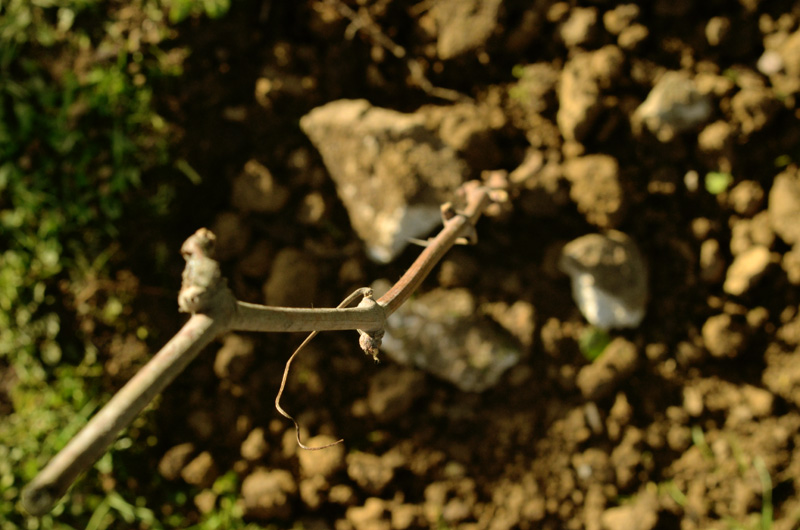
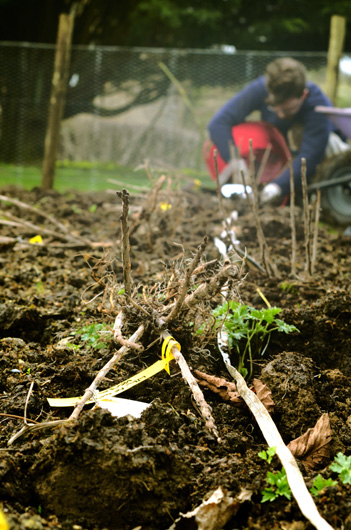

At Brogdale, John shared some little-known piece of advice on the subject of planting, especially when the roots of your chosen plant, shrub or tree have become pot-bound (see the below photo of a young tree having it's roots severed by a shovel!).
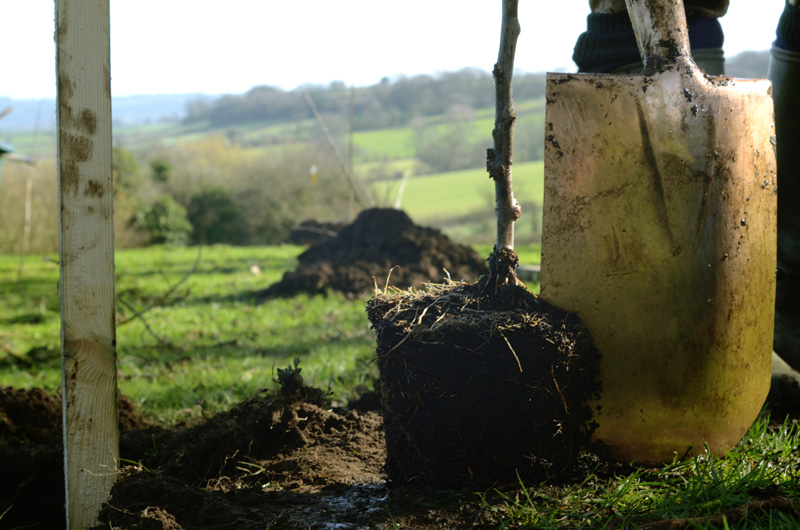
As our fruit needed protecting, a perimeter fence needed constructing (many thanks to our good friend and agricultural consultant, Sophia, for her time and expertise) and it was all hands on deck. A total of thirty-odd posts needed hammering into the ground, all surrounded in cables and wire to keep out the rabbits and livestock which graze nearby. It was slow going, painful (we nearly lost a team member to that post-thumping thing), but necessary work.
Brogdale Fruit Collection – Pruning Workshop
January 2017
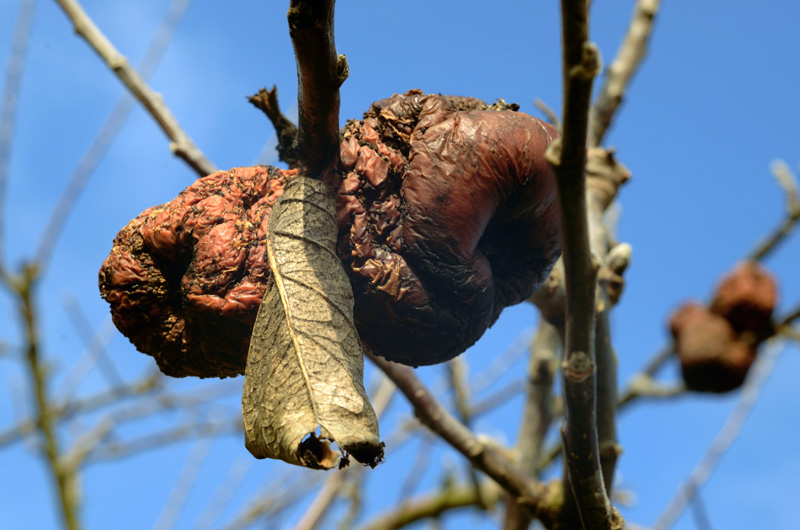
In February we visited Brogdale in Kent, which is home of the national fruit collection. Brogdale is famous for the numerous varieties of apples, pears and other fruits that it seeks to preserve, and, luckily for us, many of these are available to buy in springtime as rootstock. We're proud to say that this is where all the fruit for our new planting project comes from!
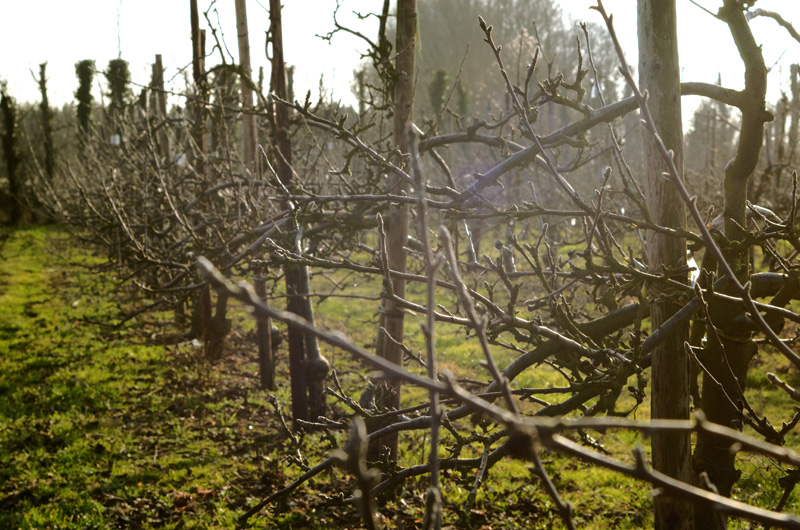
In addition, we recently attended a winter pruning workshop in the apple orchards, with John Easton, who used to be the Experiments Officer, Technical Co-ordinator and Glasshouse manager at East Malling Research station. John took us round the orchards, and demonstrated various techniques of pruning methods for establish fruit trees, which will become crucial to us in time, as our own trees mature.
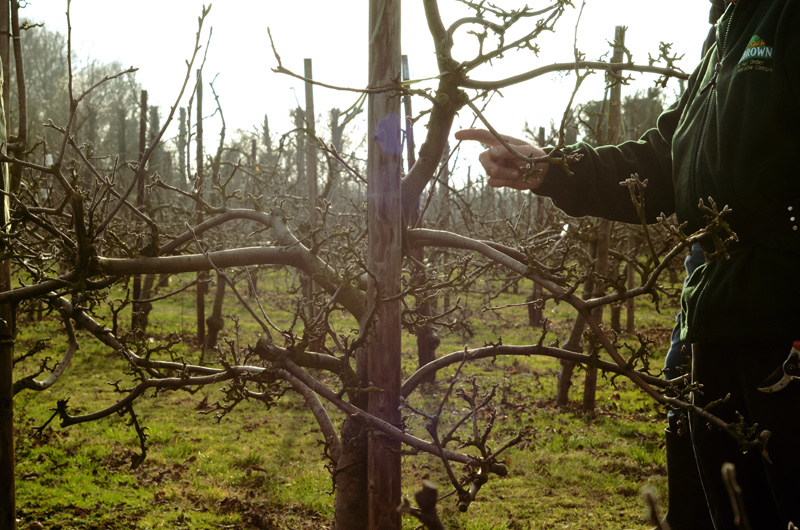
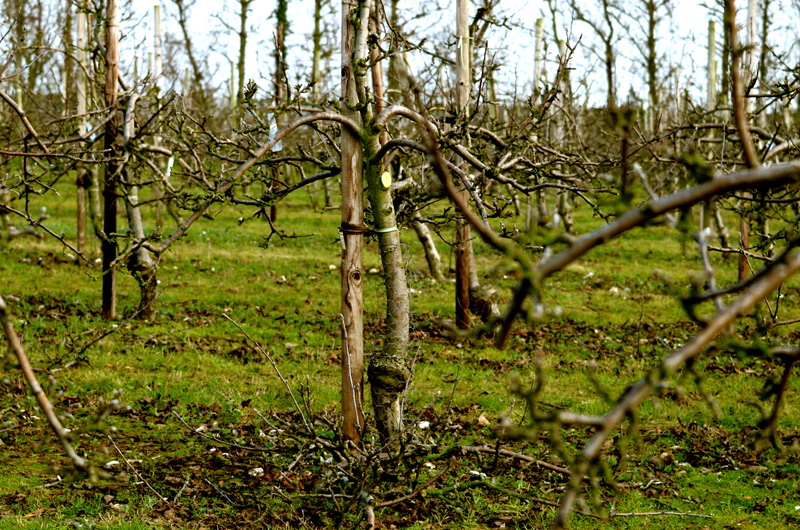
Having read a fair amount of RHS guides to pruning over the past year or so, and practised this on our existing fruit bushes and young trees, it soon became clear how little we knew on the subject of pruning in comparison to John's years of horticultural experience at East Malling (see general confusion below).
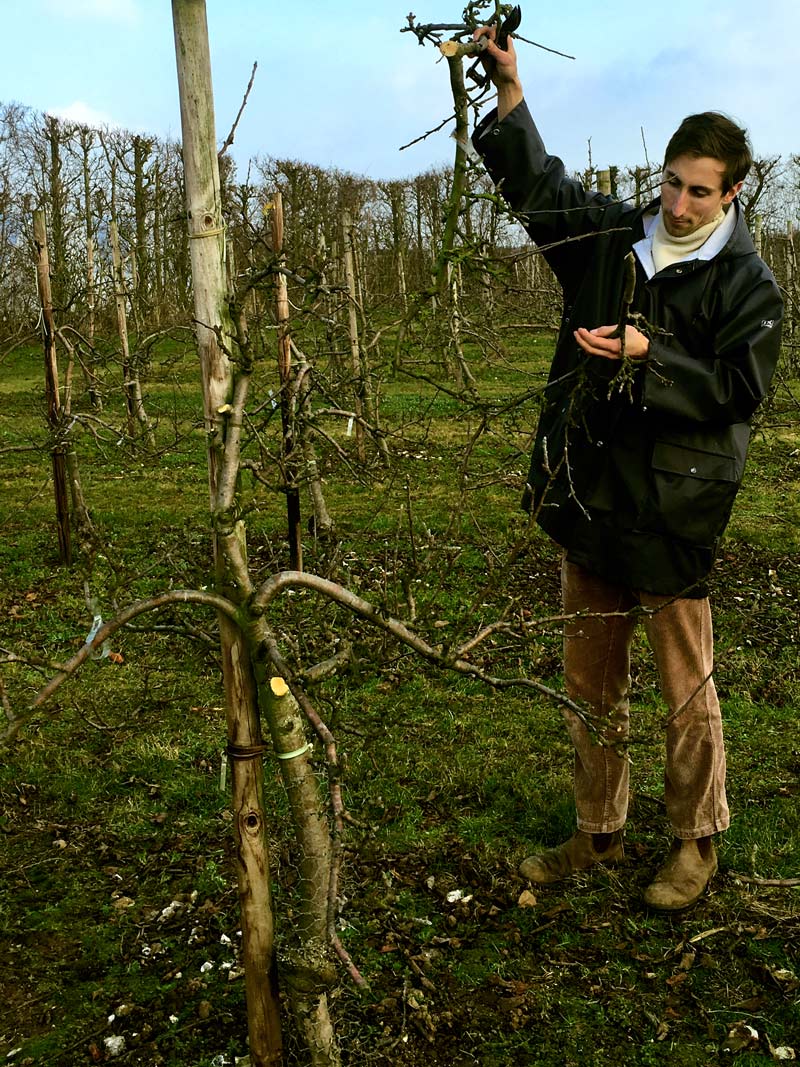
John covered an enormous amount of 'orchard husbandry', which ensures the trees continue to bear a good crop of fruit, even in later life, maintain a supple framework of laterel branches (as opposed to 'stiff'), 'open' in form (as opposed to crowded growth), and as free from disease as possible.
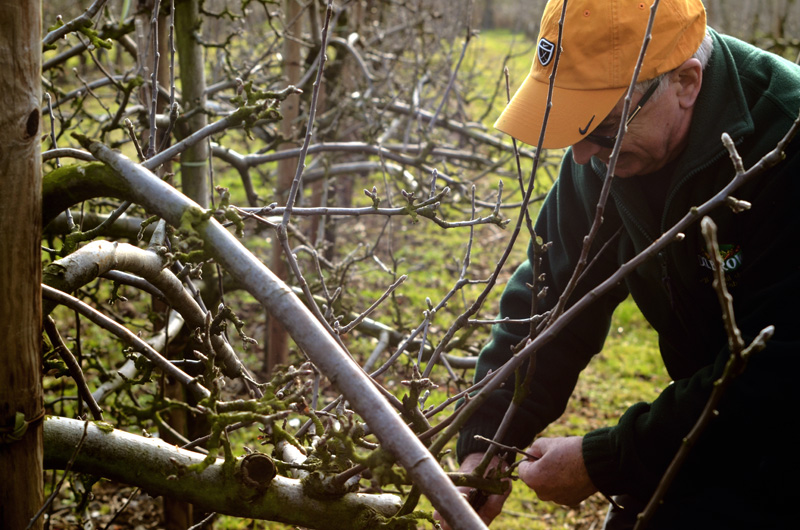
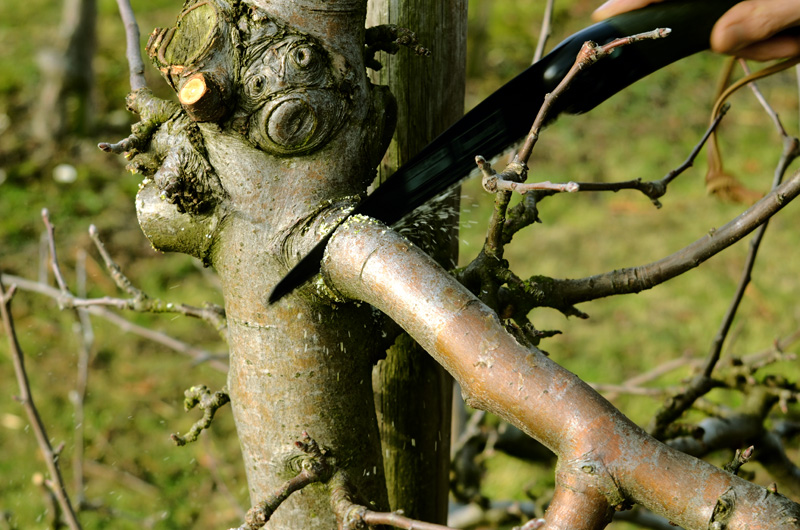
Part of this workshop also involved learning how to make a variety of cuts to influence directional growth, whilst keeping the risk of infection at a minimum and promote faster healing where pruning was necessary.
